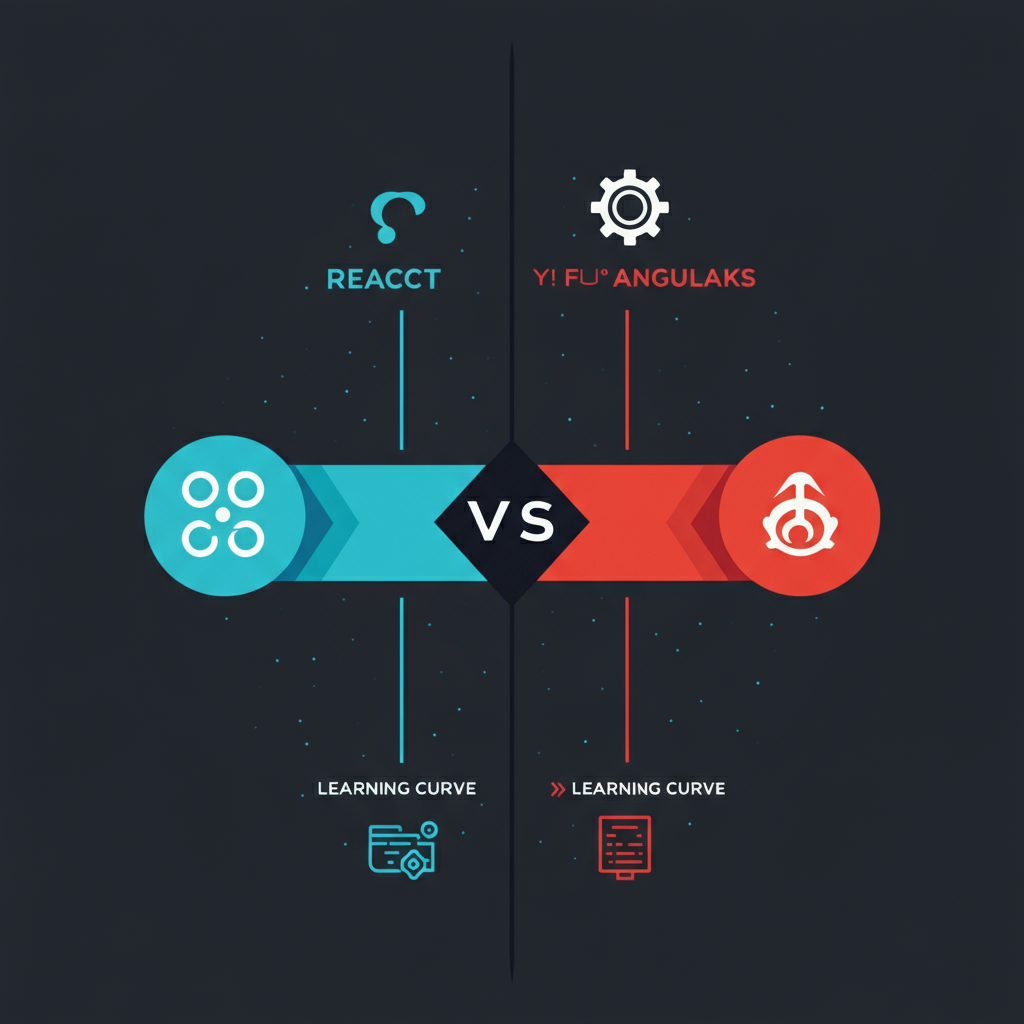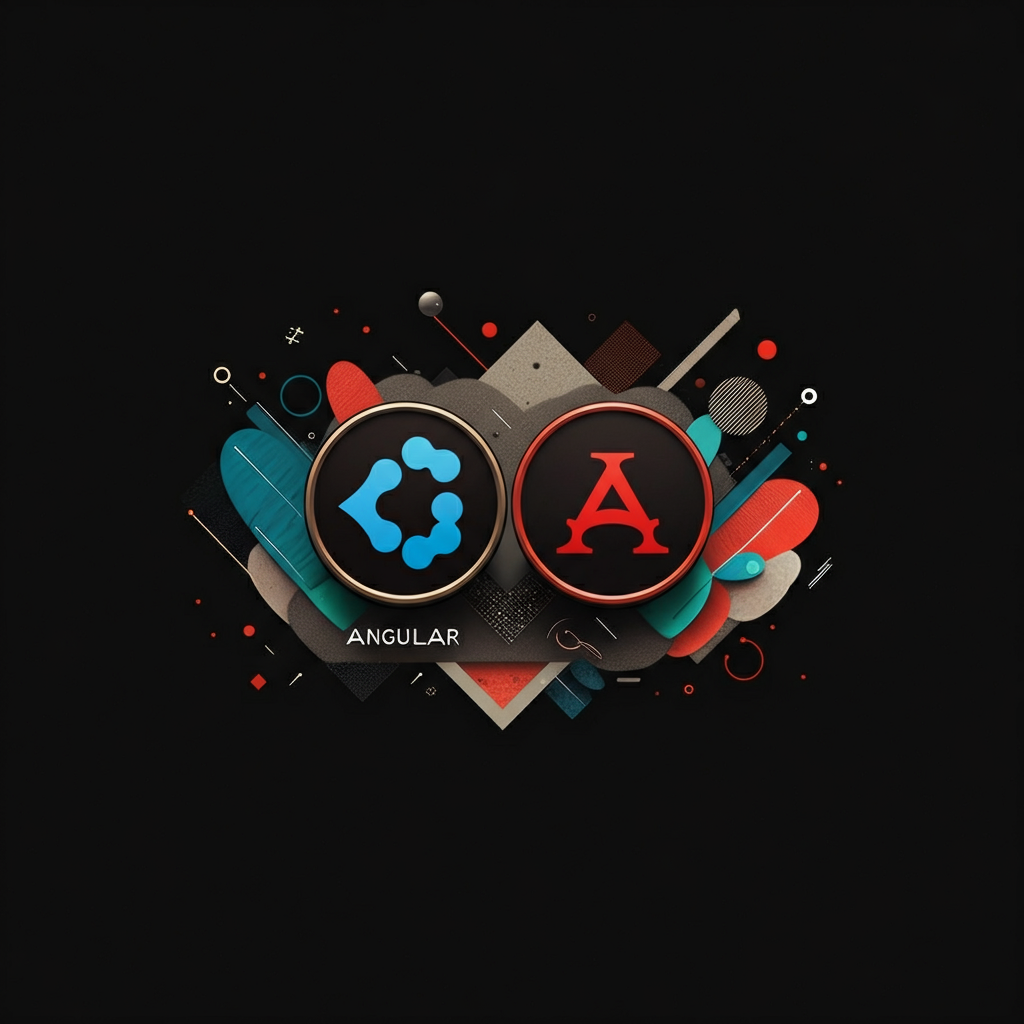When building modern web applications, selecting the right JavaScript technology is one of the most critical decisions for developers and businesses alike.
Among the top contenders, React and Angular have emerged as dominant players, each offering unique features, advantages, and benefits.

Whether you're a startup building an MVP or an enterprise scaling its complex infrastructure, understanding the differences between React and Angular is key to making an informed decision.
This blog explores their features, strengths, drawbacks, and use cases to help you determine the best fit for your next project.
What Is React?
React, developed by Facebook in 2013, is a JavaScript library designed for building user interfaces.
Its core philosophy focuses on flexibility and performance, allowing developers to create dynamic and interactive UIs efficiently.
Key Features of React:
● Virtual DOM for faster updates, optimizing UI rendering.
● Component-based architecture, enabling reusable and modular code.
● One-way data flow, simplifying state management and making applications predictable.
● Support for JSX, which blends HTML with JavaScript for intuitive component creation.
● A large ecosystem with tools like Redux, React Router, and React Native.
React's flexibility does come with trade-offs, as developers must configure additional libraries for routing, state management, and testing.
This modular approach is ideal for teams that value customization and agility.
Examples of Companies Using React:
● Facebook and Instagram leverage React for dynamic and user-centric platforms.
● Airbnb uses React for interactive and scalable interfaces.
● Netflix built its fast and responsive user experience with React.
What Is Angular?
Angular, created by Google in 2010 and fully revamped as Angular (2+) in 2016, is a complete JavaScript framework based on TypeScript.
Unlike React, Angular provides a "batteries-included" approach with built-in solutions for routing, state management, and more.
Key Features of Angular:
● Two-way data binding, synchronizing the UI and application state in real time.
● Model-View-Controller (MVC) architecture for clear separation of concerns.
● Support for TypeScript, which enhances code quality and debugging capabilities.
● Built-in tools like the Angular CLI for fast and consistent development workflows.
● Dependency injection system, promoting modular and testable applications.
Angular’s structured nature ensures consistency, particularly useful for enterprise-level applications.
However, its rigid architecture can be overwhelming for smaller teams or projects that require a more agile setup.
Examples of Companies Using Angular:
● Google powers apps like Gmail and Google Drive with Angular.
● Upwork uses Angular for a scalable freelance marketplace.
● PayPal delivers its secure and interactive payments platform using Angular.
Comparing React and Angular

Here, we’ll compare these two technologies based on key criteria to help you identify their strengths and weaknesses.
1. Performance
● React:
● Utilizes a Virtual DOM to update only the necessary parts of the interface, making it highly efficient for dynamic content like social media or real-time dashboards.
● Shines in single-page applications with many UI updates.
● Angular:
● Operates directly on the real DOM but optimizes performance through features like Ahead-of-Time (AOT) compilation and lazy loading.
● Particularly effective for large-scale apps with data-heavy operations.
Verdict: React edges out when handling rapid UI changes, while Angular handles complex, data-intensive applications efficiently.
2. Learning Curve
React:
● Easier for developers with basic JavaScript knowledge to learn and start using quickly.
● However, as projects grow, integrating additional libraries (e.g., Redux) adds complexity.
Angular:
● Steeper learning curve due to its comprehensive feature set and reliance on TypeScript and RxJS.
● Rewards developers with robust solutions after the initial learning phase.
Verdict: React is beginner-friendly, while Angular suits experienced teams, especially those familiar with TypeScript.
3. Developer Ecosystem and Tooling
React:
● Large, active community with abundant third-party libraries and tools.
● Integration with tools like React Router and Material-UI offers flexibility for developers.
Angular:
● Comes with built-in solutions, minimizing the reliance on third-party libraries.
● Its CLI tool simplifies configurations, building, and testing processes.
Verdict: React requires external integration for flexibility, while Angular provides a ready-to-use, unified development environment.
4. State Management
React:
● Relies on third-party solutions like Redux, Context API, or MobX for state management.
Angular:
● Integrates RxJS and Signals out-of-the-box, simplifying reactive state management needs.
Verdict: Angular has built-in state solutions, whereas React offers flexibility through external libraries.
5. Use Cases
When to Choose React:
● Agile startups aiming for fast MVP rollouts.
● UI-focused projects with dynamic, interactive features.
● Small to medium teams needing straightforward scalability.
When to Choose Angular:
● Enterprise-grade applications requiring rigid project structures.
● Complex systems with data-driven workflows such as CRM platforms.
● Teams prioritizing long-term maintainability and standardized coding practices.
Practical Recommendations for Developers

1 . Analyze Project Complexity
2 . For small to medium projects, React’s modularity and simplicity excel. For enterprise-grade applications, Angular’s built-in tools offer scalability and consistency.
3 . Evaluate Team Expertise
4 . Teams already familiar with JavaScript can rapidly adopt React. Angular is a better option for teams proficient in TypeScript or object-oriented languages like C#.
5 . Consider Long-term Scalability
6 . React enables incremental integration and flexibility, making it suitable for evolving projects. Angular’s structured approach ensures maintainability for large-scale applications.
7 . Prioritize Performance Needs
8 . Use React for frequent UI updates and rapid rendering. Choose Angular for applications reliant on heavy forms and data manipulation.
Key Takeaways
React and Angular are both powerful options for building modern web applications, but each excels in specific scenarios. React’s flexibility and ease of use make it perfect for projects focusing on dynamic UIs and rapid iterations.
Angular’s comprehensive framework and built-in solutions are ideal for developers seeking a structured, enterprise-ready solution.
The choice ultimately depends on your project’s requirements, complexity, and team expertise. Still unsure which to pick? Explore resources like the official React documentation and Angular's developer guide to make an informed choice.
Frequently Asked Questions (FAQs): React Framework vs Angular
1 . What is the primary difference between React and Angular?
● React is a JavaScript library focused on building user interfaces with a component-based approach. It requires external tools for additional functionalities like state management.
● Angular is a complete framework built on TypeScript, offering built-in solutions for routing, state management, and form handling, making it ideal for enterprise-scale applications.
2 . Which is better for beginners, React or Angular?
● React is easier for beginners to learn due to its simplicity and familiarity with standard JavaScript.
● Angular has a steeper learning curve because it requires knowledge of TypeScript and concepts like dependency injection.
3 . How does performance differ between React and Angular?
● React uses a Virtual DOM, updating only the necessary UI parts dynamically, which makes it incredibly fast for frequent updates.
● Angular uses a Real DOM, but it optimizes performance with tools like lazy loading and Ahead-of-Time (AOT) compilation. Angular is better for handling large-scale, data-intensive applications.
4 . What types of projects are best suited for React?
● Startups or smaller teams that need to roll out MVPs (Minimum Viable Products) quickly.
● Applications with highly dynamic and interactive UIs, such as social media platforms or dashboards.
● Projects where customization and flexibility are a priority.
5 . What types of projects are better for Angular?
● Enterprise-grade applications requiring a scalable and structured framework, such as CRMs or large admin panels.
● Applications with complex workflows and data-heavy operations like banking systems.
● Teams that prefer built-in solutions for long-term maintainability.
6 . Do React and Angular support mobile app development?
● Yes, React can be extended to mobile app development through React Native, which allows building native apps for iOS and Android using the same React library.
● Angular supports mobile app development using Ionic Framework, which combines Angular with native mobile capabilities.
● React boasts a larger and more active community, offering a vast ecosystem of libraries and third-party tools.
● Angular has a dedicated enterprise-oriented community, with robust official documentation and Google’s backing.
8 . Is React faster than Angular?
● Generally, React is faster in terms of UI rendering due to its Virtual DOM.
● Angular can be slower for certain operations because of its bidirectional data binding, but optimizations like Ivy and AOT improve its performance.
9 . Do both frameworks support strong typing?
● React primarily uses JavaScript, but developers can optionally use TypeScript for better type checking.
● Angular is built on TypeScript, offering inherent support for static typing and structured code.
10 . Can I use Angular for smaller projects and React for large-scale applications?
● Although Angular is designed for large-scale projects, you can use it for smaller applications if you need built-in solutions.
● Similarly, React can scale to large applications with the correct configuration of libraries and tools.
11 . Which is better for SEO and server-side rendering?
● React provides excellent support for SEO through frameworks like Next.js, which enables server-side rendering.
● Angular also supports SEO optimization with its server-side rendering tool called Angular Universal.
12 . How do I choose between React and Angular for my project?
Ask yourself the following questions:
● What are your team’s expertise and familiarity with JavaScript or TypeScript?
● Is your application small, dynamic, or needs fast development (React)?
● Does your application require a robust, structured setup for long-term scalability (Angular)?
Looking to build a cutting-edge website with React or Angular? Trust the experts at New Web Order for professional web development services that bring your vision to life.
Whether you're a startup creating an MVP or an enterprise seeking scalable solutions, our team delivers high-performance, tailored applications that stand out. Contact us today to make your project a success!


